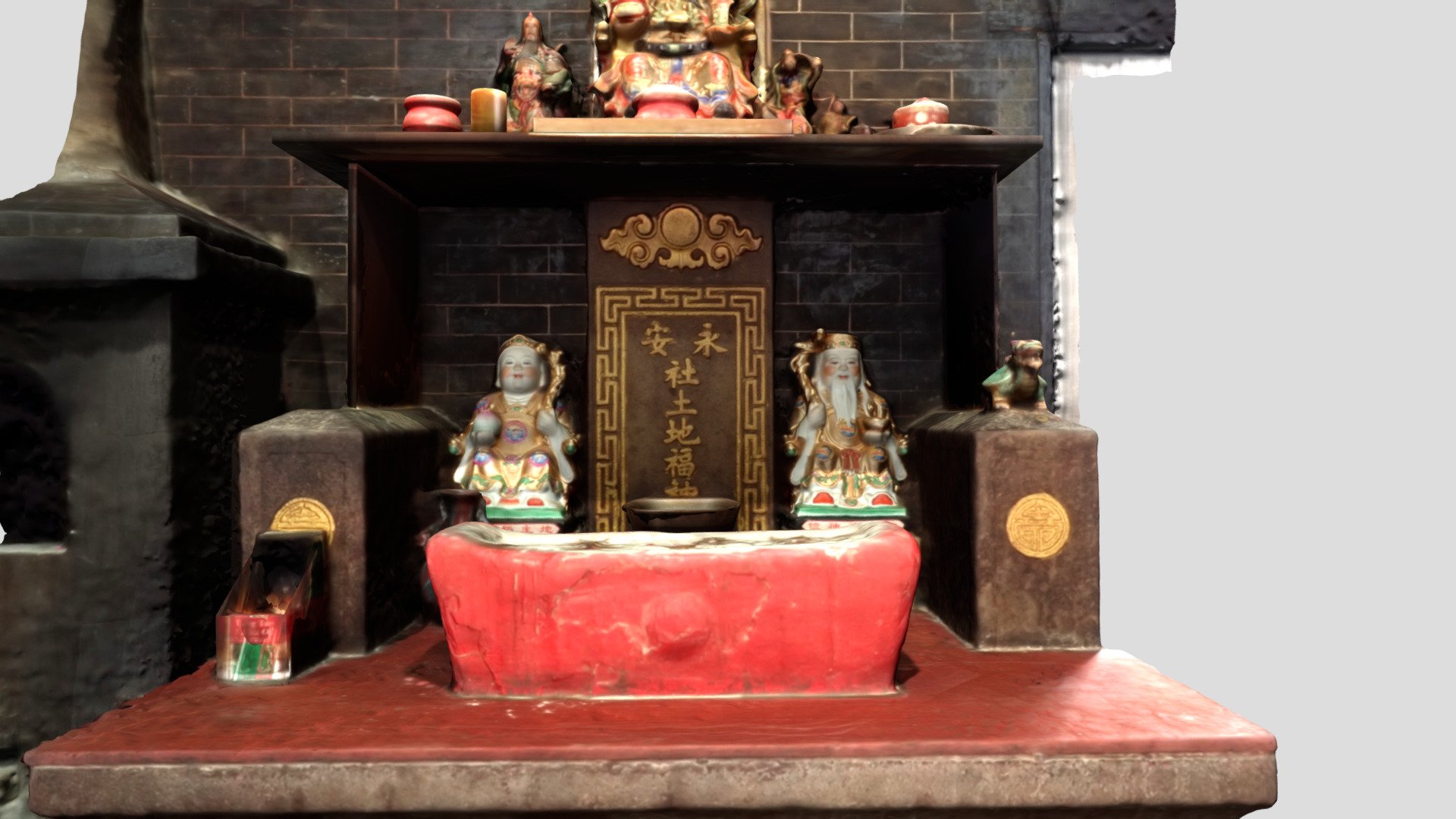
永安社土地福神(石牆街福德祠內)
sketchfab
The defense system on the northwest outskirts of Macau is like a blank canvas in landscape painting - the walls built after the Portuguese and Dutch wars are no exception. The Li Xiwan Fort or Palacio da Alvorada Fort has been abandoned, and the strategic value of the reclaimed land outside the harbor, White Eagle Nest, and Big Cannon Hill is extremely low. Military investment was discontinued. Initially, it was due to the Ming dynasty's poor visibility that allowed the Portuguese to set foot on this shore. Until 1669, the walls in this area were not even included in the French-made port map, but in reality, they were simply connecting the surrounding walls of Big Cannon Hill, Saint Paul's Academy, Flower King Church, and Pereira Mansion, so it was a winding path that started from today's Macau Museum administrative building, along the Celin Wall and Xinsheng Street downhill to the back of St. Anthony's Church, then turned 90 degrees east to avoid the Regency Hotel, and finally followed White Eagle Nest Hill northward to the harbor. Geographically, the walls are low-lying and easily broken through by buildings, making them easy to attack but difficult to defend; however, this has facilitated cultural exchange between the two ethnic groups. From the doorway of the Flower King Temple outside St. Anthony's Church, one can see the rice fields with spring green and autumn yellow as early as 1781. About sixty years later, a single-street border town called Shihui Village was formed north of the city gate - poor Chinese houses were lined up side by side, backing against the White Eagle Nest Park wall, conserving materials while highlighting the unity and practicality of fishermen and farmers. Common homes, sowing crops in front; neighbors on both sides, fishing goods passing back and forth; foreign clocks ringing, the emperor far away; able to live a simple life and also enjoy exotic lands. The strategic experts ignored the military swamp that suddenly became a cultural frontier where East and West breathed together after the walls were drawn apart, showing that people's willpower is stronger than war drums and unity is the trend of history. In 1844, the quiet Shihui Village was finally mentioned in the Qing court records, and the Portuguese coveted it for twenty years before occupying the village, paving roads, erecting signs, lighting lamps, and taxing residents, merging it into Macau City and renaming it Shihui Street. The original houses on both sides of the street also developed another row of buildings, Chinese merchants rose to power, and Sha Li Head was rapidly developed. Until the 1880s, officials in Guangdong Province recorded that Shihui Street had twenty to thirty households, already approaching today's scale. The Land God of Wong Ah Fong is the most important historical relic in Shihui Village. The altar was built by devout believers and dedicated to the god inside a roofed temple, with two plaques, "Yong Dai Fan Pu" (Everlasting Peace) and "Tong Shan De Ze" (Shared Virtue), dating back to 1874. In the old days, the expanded land in Sha Tin extended to the foot of the city wall, and both sides displayed fists under the shadow of mud forts and stone walls; small Chinese civilians understood that Portuguese people were hiding their desires behind their exterior: they wanted to shake hands, trade, so they vowed to "live in eternal peace" between the Han and Portuguese territories, proving that military generals could not stop people's enthusiasm for communication. Regardless of when the Wong Ah Fong Temple was built, the faithful have been living there for centuries. Although "eternal peace" is an extravagant wish, over a hundred years of stability still stands out in the turbulent modern history.
With this file you will be able to print 永安社土地福神(石牆街福德祠內) with your 3D printer. Click on the button and save the file on your computer to work, edit or customize your design. You can also find more 3D designs for printers on 永安社土地福神(石牆街福德祠內).
